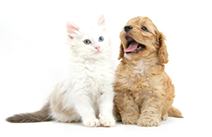Feeding your kitten
Kittens grow rapidly, a two-year-old cat will accomplish that same growth you do in 25 years. To support all that growing and learning, feeding your kitten a Superior Nutrition diet while they're young will help to support healthy organ function, bones, teeth, joints, skin and coat. This high-quality diet will help your kitten thrive and set them up for a healthy future.
Food and feeding
To give your kitten the best start in life, we recommend a mix of dry and wet kitten food, supported by plenty of clean water, nutritious treats and maybe some kitten-specific milk.
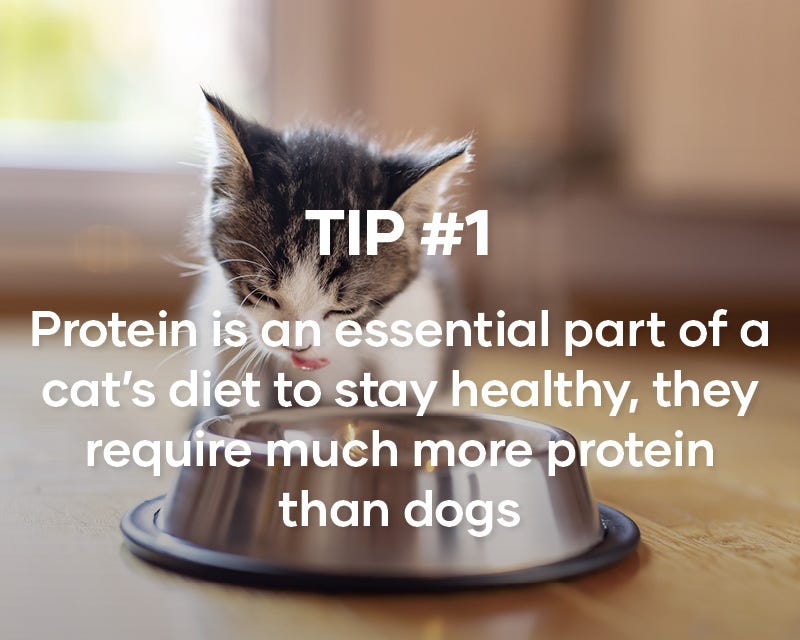
How to recognise the best kitten food
- A tailored, balanced nutrition just for kittens (well-known brands include Hill's Science Diet kitten food and Royal Canin kitten food)
- Added minerals and vitamins, (such as added DHA that aids in developing brain function) which are important for joints, bones, teeth, and general health.
- Added oils for healthy skin and fur.
- Created in partnership with veterinary and nutritional experts.
- Sold only at vets and specialised pet supply shops like Animates.
What to feed your kitten
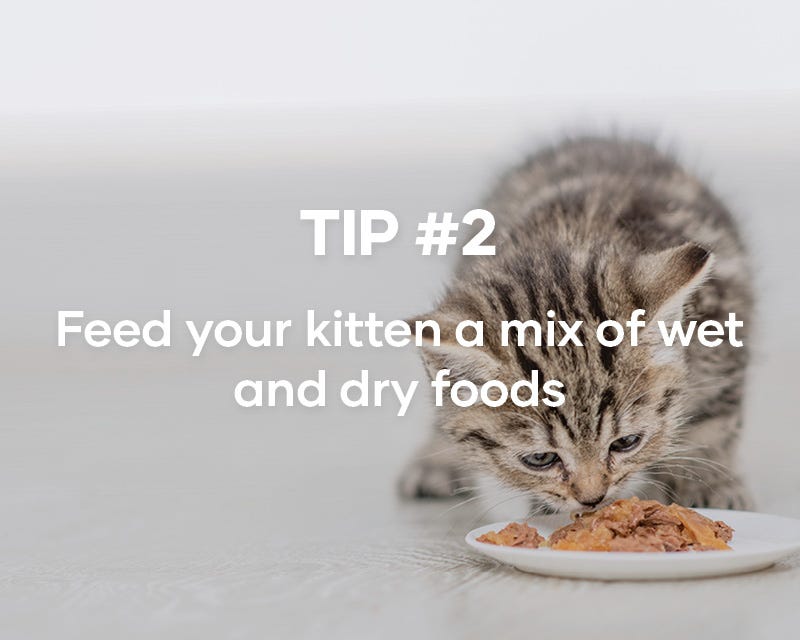
Feeding your kitten a mixture of dry and wet food has multiple health benefits. Dry food is nutrient-dense and beneficial for dental health, bone development and intelligence, while wet food provides flavour, texture, and essential hydration.
- Feed your kitten dry food, such as Royal Canin kitten biscuits, in a separate bowl to wet food. See our selection of kitten bowls.
- If your kitten starts to get a little chunky, wet food is less calorie-dense than dry food.
- Some cat breeds are prone to urinary tract infection, so a wet diet can help ensure they're adequately hydrated.
Note: If you are feeding your kitten wet food, always remember to remove leftovers to avoid flies. Also it's important to serve wet food in a separate bowl to the kibble, so it remains fresh for longer.
If you decide to feed your kitten a combination of wet and dry kitten food in their diet, make sure you adjust the recommended portion sizes of each so that you don’t overfeed or underfeed your pet. To learn more about mixed feeding, check out our article ‘How to decide between wet or dry cat food’
Are homemade diets recommended?
While some people choose to feed their kitten a homemade diet, it can be very difficult to do correctly. Pet owners feeding a homemade diet feel they are providing the right nutrients, but they are often not providing balanced nutrition. Homemade diets are often based largely on protein and can be extremely nutritionally unbalanced. This means the food is unable to meet the specific needs of a growing kitten and puts them at risk of nutritional deficiencies. The best kitten foods available at Animates and Animates Vetcare clinics are scientifically proven to provide a complete and balanced diet to benefit your pet.
How much to feed your kitten

Kittens have tiny tummies, so they need about four meals a day. Consult the feeding guidelines on the packaging of your kitten’s food, then divide the recommended daily amount into mini meals.
- With dry food, you can leave some out all day and allow your kitten to graze. However, grazing is not recommended for kittens that are food obsessed. Overweight kittens become overweight cats, which is a health risk. If you’re ever worried about your kitten’s weight, we recommend calling your local Animates Vetcare clinic.
After those first six months their growth rate will begin to slow down and at that point you may decide to reduce their meals to twice per day. You may even decide to leave their food out as some cats prefer to graze throughout the day rather than have set meal times. Follow the feeding guide on the kitten food label.
Foods you shouldn’t feed your kitten
Get into the habit of following strict food safety guidelines for your kitten, to avoid food poisoning, malnourishment, and emergency dashes to the vet.
- It’s best to avoid bones, raw meat and raw fish. Meat and fish should be cooked to avoid potential infection with pathogens like salmonella. Bones can get stuck or splinter and perforate the kitten’s digestive tract.
- If you have a dog in the house, don’t let the kitten eat the dog’s food. It won’t contain the nutrients a growing cat needs.
- Avoid giving your kitten titbits of human food, which might have additives that are harmful.
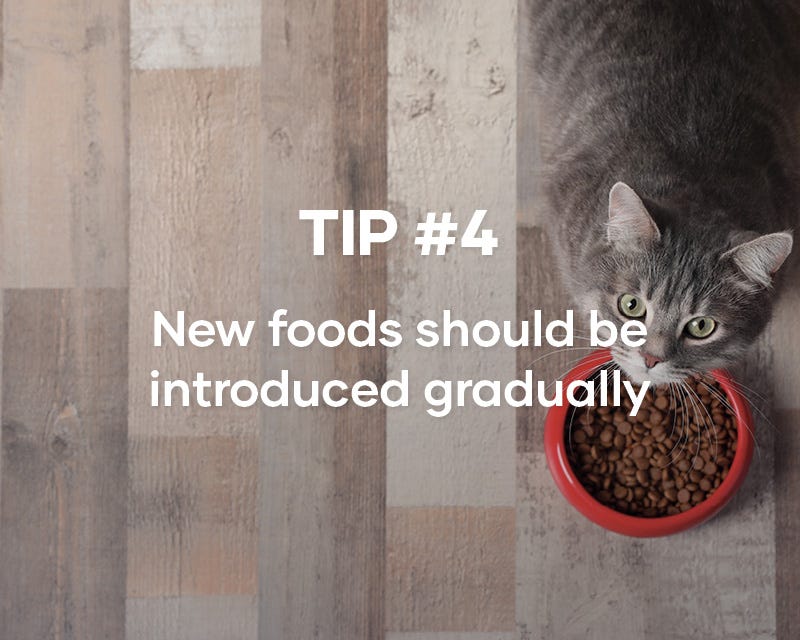
Changing your kitten to a new food
When you adopt your kitten from the breeder, SPCA or animal shelter, ask what they have been eating. This is your starting point for feeding your kitten. Over a week, you can gradually switch the kitten to the high-quality kitten foods you have chosen. Keep an eye out for constipation or diarrhoea, which are both signs you might need to slow the changeover.
- On the first day, feed your kitten their usual food, plus just a tiny bit of the dry and wet foods you have bought. Offer dry foods in one bowl; wet foods in another.
- For the next five days, gradually decrease the amount of your kitten’s original food and offer more of the new foods.
- On day seven, switch entirely to the new dry and wet foods. To learn more tips and tricks for transitioning your cat's diet, check out our article 'A guide to changing your cat's food'.

For the most part, after 12 months it’s time to switch your kitten over to adult food, as they have finished developing and are now a fully-grown cat. Your pet will need to continue with a complete and balanced diet, but their overall nutritional needs will be different. Unless your vet suggests otherwise, we recommend feeding your adult cat a Superior Nutrition diet that is specially formulated for adult cats - once your feline friend reaches 12 months of age.
Treats for bonding and training
Treats are a great way to bond with your kitten and reward positive behaviour. You can use them when your kitten is having cuddles and just after they successfully use the litter tray. Treats can also be used to teach your kitten tricks, like ‘sit’, ‘high-5’ and ‘up’.
- When giving treats to your kitten, it’s important that you only give cat-specific products. We recommend shopping at Animates, where you can get advice about kitten treat products.
- Try one or two new kitten treats at a time, ensuring there are no other dietary changes happening at the same time to your kitten. If nothing changes in the kitten’s litter tray behaviour, you’re onto a winner.
- As your kitten grows, you can expand the choice of treats. For example, there are kitten dental treats and high fibre treats that help with hairball issues.
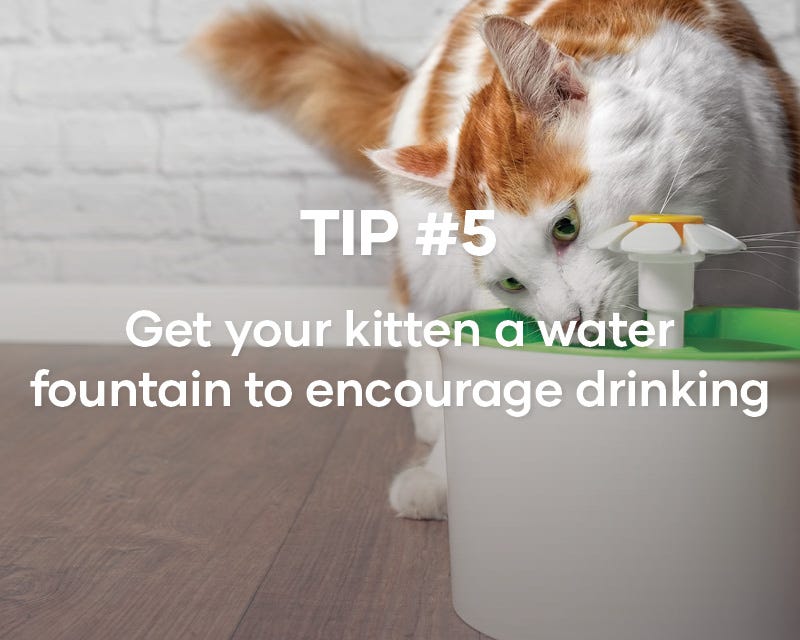
Kitten hydration
Getting your kitten to drink is just as important as getting them to eat. Your job is to make sure water is always available and always fresh. Kittens and cats tend to drink when no-one is watching, so you’ll need to monitor fluid intake by keeping an eye on bowl levels.
- Make sure your kitten’s main water bowl is at least one metre away from their food bowl. Cats don’t like water and food in the same place.
- Water bowls need to be well away from litter trays.
- Have a supplementary bowl of water somewhere else in the house, like in a bathroom or laundry.
- When your kitten is very little, take them to the water bowl after playtime, naptime and feeding time.
- Cat drinking fountains provide filtered water that’s fun for your kitten. Cats love drinking flowing water because they instinctively believe it’s fresher.
- Cats are lactose intolerant, so dairy products can cause serious tummy upsets. Instead of cows milk, look for a purpose-made product – usually called kitten milk, kitten formula, kitten milk replacer, kitten milk powder or babycat milk.

Choosing the best kitten food is vital at this stage of your pet’s development. If you need any more information about what to feed your kitten, come in and have a chat with our friendly pet experts at your local Animates store. Our knowledgeable store staff will help you choose a kitten food that provides your new furry friend with high quality proteins, vitamins and minerals so they can continue to grow into a healthy cat.


